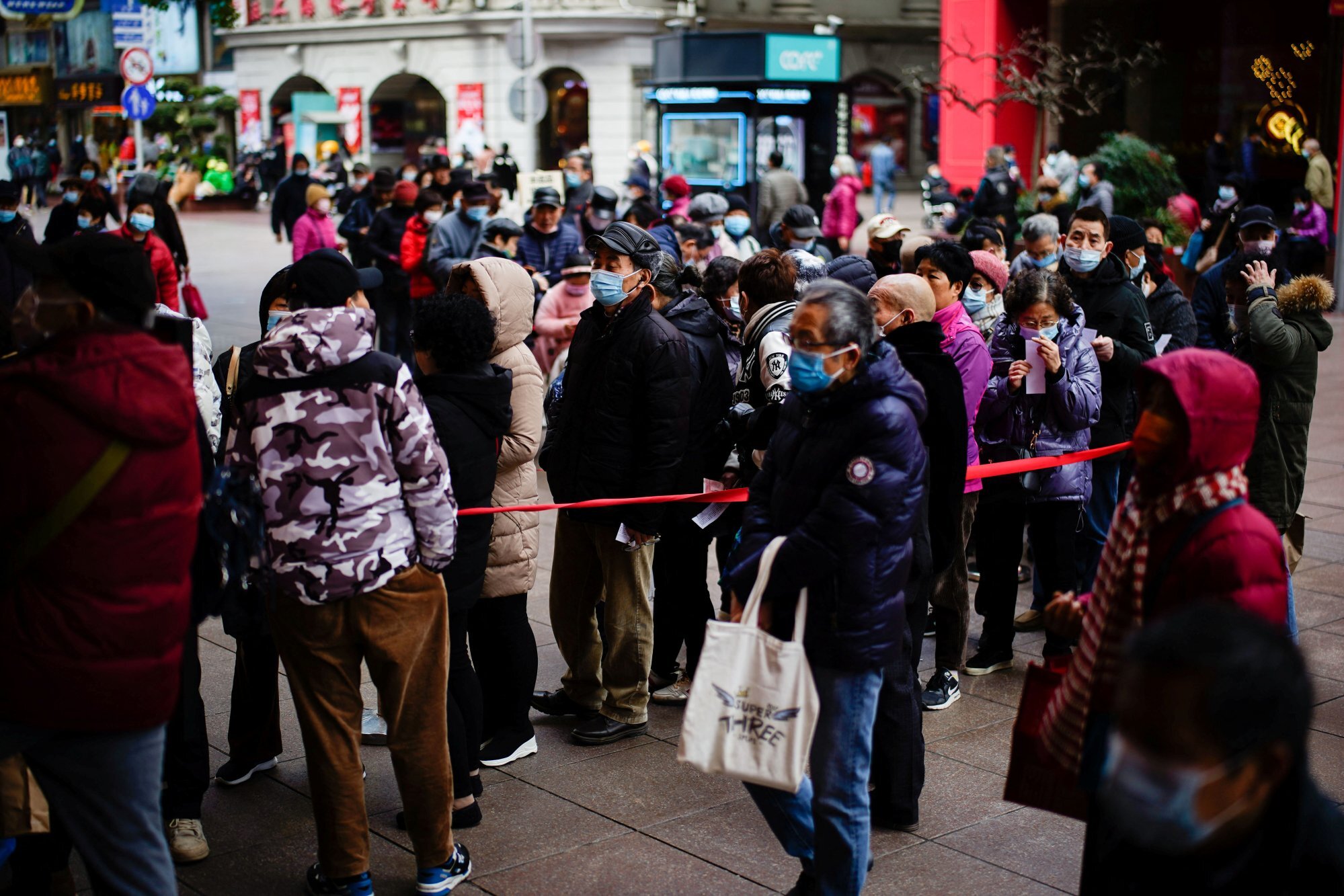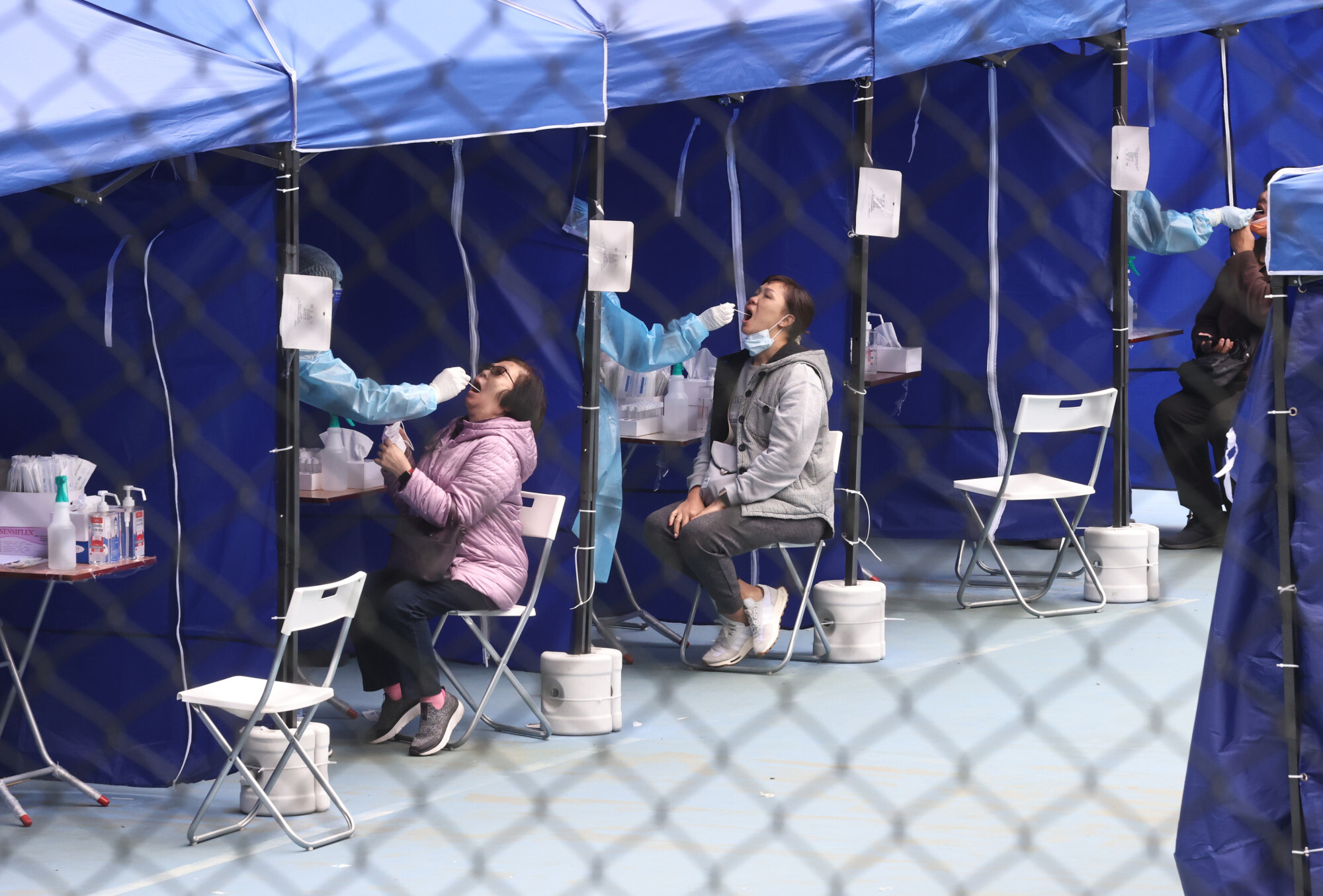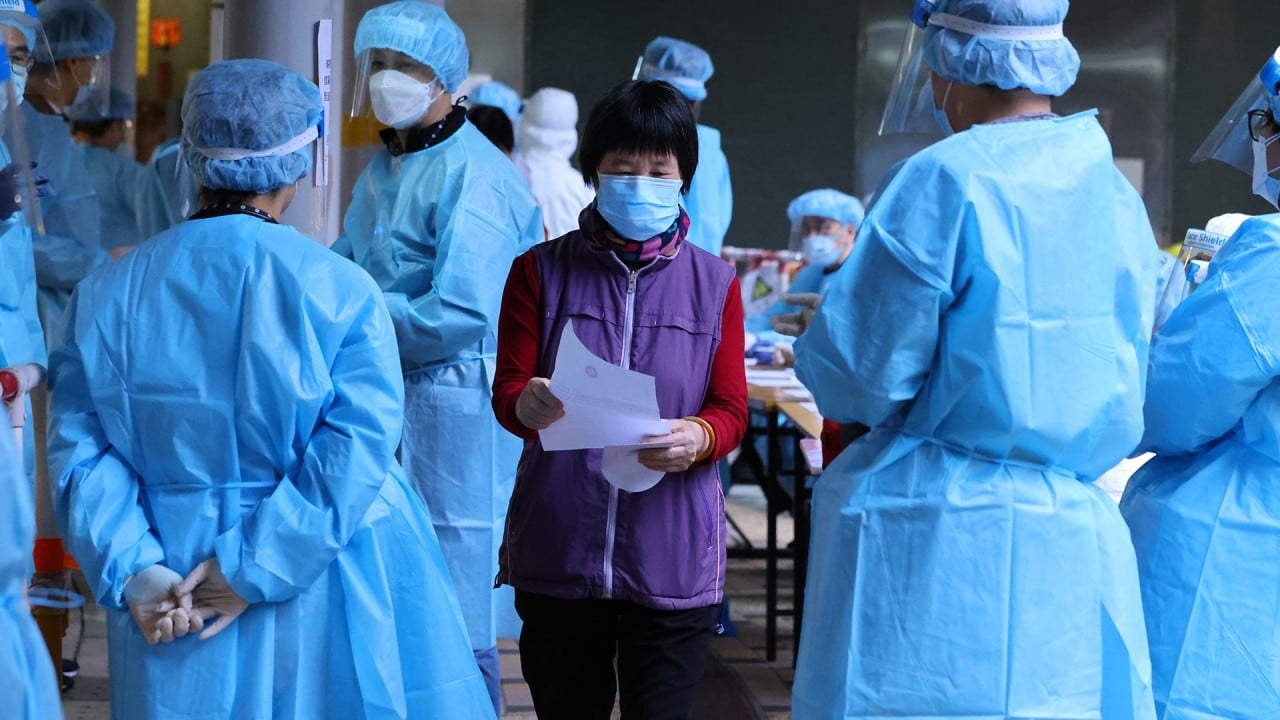It refers to a slew of measures, such as mass testing, stringent border controls, extensive contact tracing and snap lockdowns, aimed at swiftly stamping out new outbreaks when they happen.
A national directive issued in September, for example, suggested local health authorities were required to define their scope of testing based on how an outbreak spread and its risks.
Cities with more than 5 million people are required to finish a round of testing within three days, while smaller cities have two days to do the job. Local authorities are required to test large populations by dividing them into smaller units – such as residential buildings, villages, schools and companies – so that no one is missed.

2. How is the strategy applied on the mainland?
Mainland cities handled the outbreak in different ways under the same national directives.
The northwestern city of Xian – home to about 12.95 million people – was under lockdown for 32 days after reporting more than 150 cases daily at one point last December.
At least 50,000 people were sent to quarantine, while authorities launched several rounds of mass testing involving more than 90 million Covid-19 tests.
Other cities have opted for swift and abrupt lockdowns on a smaller scale.
Shanghai shoppers were trapped in a milk tea store and a branch of a popular Japanese clothing chain, Uniqlo, for two days last month until all staff and visitors tested negative.
‘Beijing to send support teams, millions of test kits’ to help Hong Kong Covid fight
‘Beijing to send support teams, millions of test kits’ to help Hong Kong Covid fight
Beijing authorities also locked down some housing compounds and tested residents when more than 20 new cases were reported days before the Winter Olympics began.
Analysts said these first-tier cities adopted a different approach as they had more disease management experience and were better equipped, with more medical staff.
For example, Shanghai had about 3,000 full-time epidemiological investigators, 10 times more than Xian. The municipality’s contact-tracing was also more “comprehensive”.
Shanghai did impose “lockdown management” in early February 2020 on 13,000 residential communities and compounds, including stricter controls on the movement of people and vehicles. The measures were gradually relaxed at the end of the month.

3. What about the situation in Hong Kong?
Chief Executive Carrie Lam Cheng Yuet-ngor has repeatedly stressed Hong Kong will stand by the dynamic zero-infection strategy, which is more targeted and on a smaller scale.
Tens of thousands of residents have been screened daily for Covid-19 during the fifth wave of infections, after sewage samples in their districts tested positive, or they had visited or lived in places found to have infections.
A week-long lockdown took place only once on a Kwai Chung public housing estate, involving 2700 households. Other such operations were shorter even if Covid-19 cases were detected.
Close contacts of Covid-19 patients are now allowed to quarantine at home to ease pressure on quarantine facilities.
Flights from nine countries, including the United States and Britain, are banned until March 4.

04:36
Hong Kong prepares for tightest restrictions yet as Covid-19 cases top 1,100
Hong Kong prepares for tightest restrictions yet as Covid-19 cases top 1,100
4. Why does Hong Kong employ a more ‘targeted’ approach?
Hong Kong’s daily coronavirus screening capacity only reached 100,000 in January, and a further 200,000 will be added when a laboratory in Ma On Shan is ready later this month.
Large numbers of residents ordered to undergo compulsory testing have been seen outside testing centres across the city on a daily basis, with some complaining of possible infection due to the long wait. The government has since reduced the number of mandatory tests for residents from three to two, citing the short incubation period for the Omicron variant.
Unlike mainland cities, Hong Kong does not have a system that can track residents’ whereabouts due to privacy concerns. Residents will only be prosecuted if epidemiological investigations reveal they have lied about their whereabouts for contact-tracing purposes.
Hong Kong logs record 1,325 Covid-19 cases, over 1,500 preliminary infections
Hong Kong logs record 1,325 Covid-19 cases, over 1,500 preliminary infections
Use of the “Leave Home Safe” risk-exposure app, introduced in late 2020, is now mandatory to enter a growing list of premises, including restaurants and government facilities. The app does not have a tracking function.
Users now have to upload vaccination records to the app so staff at “high-risk premises” such as restaurants and gyms can scan and keep a record for 31 days.
5. Can Hong Kong practise ‘mainland-style lockdowns’?
Professor Gabriel Leung, dean of the University of Hong Kong’s faculty of medicine, on Thursday urged the government to consider the feasibility of a longer “lockdown” on a bigger scale, and implement more stringent measures.
Leung had predicted daily case counts could hit 28,000 at their peak, and related deaths could total 1,000 by June, even if current strict social-distancing rules were maintained.
But Anthony Wu Ting-yuk, chairman of Sunrise Diagnostic Centre and a former Hospital Authority chief, brushed aside such a call.
“A citywide lockdown is unnecessary as long as people are working from home and large-scale testing is implemented district by district,” Wu said. “The government will not have enough resources to implement a lockdown on the whole city. But if we have enough manpower, we can lock down a dozen buildings for three days.”
Hong Kong restaurants report smooth launch for vaccine pass pilot scheme
Hong Kong restaurants report smooth launch for vaccine pass pilot scheme
Ip Kwok-him, a member of the Executive Council, Lam’s de facto cabinet, said there were cultural and social differences which made it difficult for Hong Kong to take radical measures.
The city also lacked a tracking system for close contacts that was similar to the mainland’s, he added.
Executive Council convenor Bernard Chan, a top adviser to Lam, said on Thursday he doubted whether a full lockdown was possible.
“We just can’t do it in Hong Kong. We cannot have the same sort of lockdown as in the mainland,” he said.
6. What’s next?
Beijing officials and state media have warned Hong Kong not to deviate from the dynamic zero-Covid strategy, as any shift towards “living with the virus” would result in disaster for the city, and delay resumption of quarantine-free travel with the mainland.
Mainland officials will meet their Hong Kong counterparts on Saturday to discuss how to help the city fight the fifth wave of infections. The construction of another makeshift hospital of the kind erected in Wuhan in the early days of the pandemic will be among the topics of discussion, according to sources.
New makeshift hospital on table, ‘hundreds’ of mainland lab staff in Hong Kong
New makeshift hospital on table, ‘hundreds’ of mainland lab staff in Hong Kong
Meanwhile, a Guangdong health official said on Friday that hundreds of Cantonese-speaking medical and lab personnel from Guangzhou and Shenzhen had already been dispatched to Hong Kong to lend a hand in laboratories and testing stations, with more set to follow.
Hong Kong’s sole delegate to the nation’s top legislative body, Tam Yiu-chung, said it would be best if Beijing agreed to send 1,000 professionals to the city to help boost testing and quarantine capacities.
Tam said he believed the mainland experts would be able to provide suggestions on whether universal testing or larger-scale lockdowns were needed.

